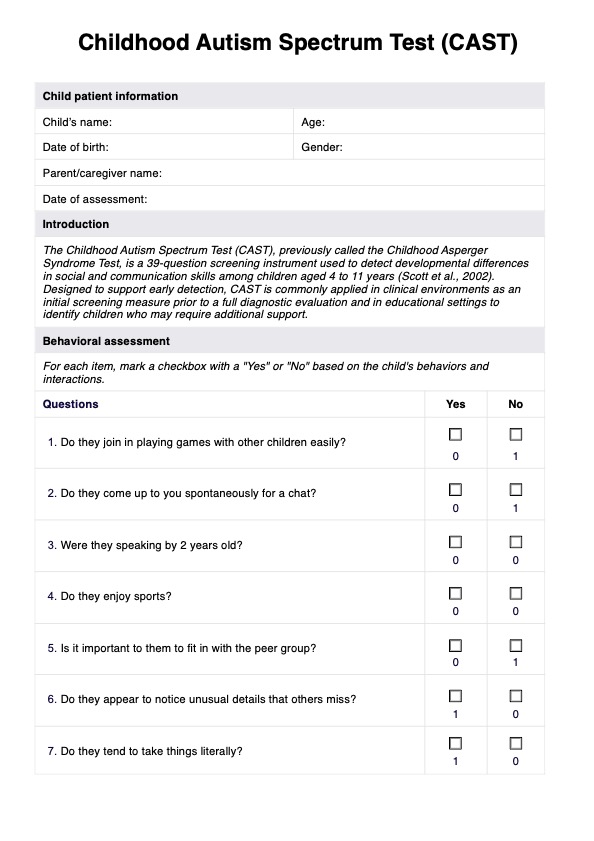The CAST entails a questionnaire of 39 items, commonly filled out by a parent or caregiver of a child aged 4 to 18 years. Typically, it takes around 20 to 30 minutes to finish, assuming they know what to tick for all items.

Childhood Autism Spectrum Test
Screen children aged 4–11 for autism traits with the Childhood Autism Spectrum Test (CAST)—a validated, research-backed screening tool for early identification.
Childhood Autism Spectrum Test Template
Commonly asked questions
The CAST score helps identify potential autism traits. Scores of 15 or above suggest significant developmental differences, prompting referral for further evaluation. It’s a screening tool—not a diagnostic assessment.
The Childhood Autism Spectrum Test can be used by healthcare professionals, educators, and caregivers to screen children aged 4–11 for autism traits, with interpretation ideally handled by trained clinicians.
The Childhood Autism Spectrum Test can be used by healthcare professionals, educators, and caregivers to screen children aged 4–11 for autism traits, with interpretation ideally handled by trained clinicians.
EHR and practice management software
Get started for free
*No credit card required
Free
$0/usd
Unlimited clients
Telehealth
1GB of storage
Client portal text
Automated billing and online payments











